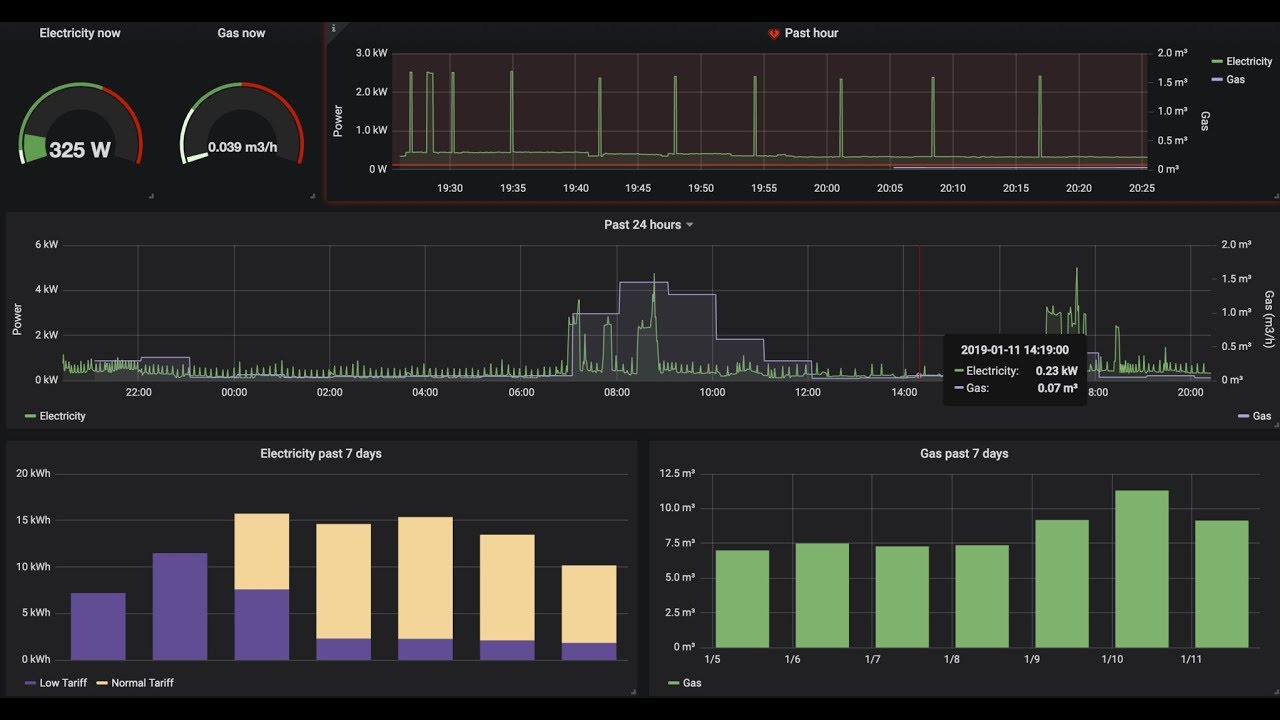so I managed to do that:
I obviously need some editing… There is no way I can find edit fields in the interface, cause his is all I see.
Probably need to edit the json, and point to my Homeassistant entities but I can’t seem to find the relevant entries in your Json, which only uses a few as far as I can see?
would you be willing to guide me a bit further? The editing you show in the video can one be done when a graph is shown a all, and since my screen is as it is, that’s not yet possible.
which sensors do you use, and where are they in the Json?
If I open the Json in the Grafana window, most of it has gone and I only see this:
{
"annotations": {
"list": [
{
"builtIn": 1,
"datasource": "-- Grafana --",
"enable": true,
"hide": true,
"iconColor": "rgba(0, 211, 255, 1)",
"name": "Annotations & Alerts",
"type": "dashboard"
}
]
},
"description": "Overview of electricity and gas usage in the house",
"editable": true,
"gnetId": null,
"graphTooltip": 0,
"hideControls": false,
"id": 3,
"links": [],
"refresh": "10s",
"rows": [],
"schemaVersion": 14,
"style": "dark",
"tags": [],
"templating": {
"list": []
},
"time": {
"from": "now/d",
"to": "now"
},
"timepicker": {
"hidden": true,
"nowDelay": "",
"refresh_intervals": [
"5s",
"10s",
"30s",
"1m",
"5m",
"15m",
"30m",
"1h",
"2h",
"1d"
],
"time_options": [
"5m",
"15m",
"1h",
"6h",
"12h",
"24h",
"2d",
"7d",
"30d"
]
},
"timezone": "browser",
"title": "Energy usage",
"version": 0
}
fyi, my homeassistant instance is on a rPi, and both my Grafana an Influxdb are on my Synology NAS.
Proof of the connections working correctly:









